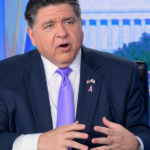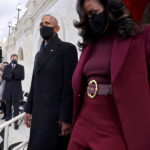It comes layered on top of households’ exasperation over the cost of living. A 62% majority in the Oct. 23-25 poll said the cost of their everyday items had climbed over the last month and nearly half of those people said the increases have been difficult to afford.
President Donald Trump and his aides have responded by putting a positive spin on the economic indicators and deflecting blame elsewhere — tactics President Joe Biden also used, to little avail — along with assuring things will get better. The risk is that, should the job market and prices fail to shift enough to satisfy voters, Republicans risk losing control of Congress in next year’s midterm elections.
“The Biden administration really was a cautionary tale about trying to convince voters that the economy is better than their intuitions suggest,” said Tobin Marcus, head of US policy and politics at Wolfe Research and a former adviser to Biden during his vice presidency.
Part of the challenge for Trump and his team is their economic program “is not squarely aimed at the pain points that are most important” to voters, Marcus said. The president has championed the steepest tariff hikes since before World War II to shrink the trade deficit and encourage a re-shoring of manufacturing.
“They are seeing misplaced priorities,” Marcus said. “No one’s making an argument that the tariffs will bring prices down, which is the thing that voters first and foremost elected him to do.”
Lately, Bessent has taken to playing up how good things will get next year, when he says the impact of Trump’s signature tax-cut legislation will be felt. Billions of dollars worth of tax refunds will be flowing, and job gains will come from the surge of investment in artificial intelligence, he said Tuesday on MSNBC.
Trump’s advisers are considering plans for the president to give more speeches around the country about the cost of living, according to a White House official. Trump has done relatively little domestic travel to sell his agenda compared to his recent predecessors.
For now, many Americans aren’t buying the administration’s narrative. The Harris Poll showed 48% of respondents said it would take them four months or longer to find a new job of similar quality if they lost their current one. The survey of 2,203 adults had a margin of error of +/- 2.5 percentage points.
Job growth has slowed, with payroll gains having plunged from an average of 168,000 a month last year to just 27,000 in May through August — the most recent month for which there’s data. Inflation remains above the Federal Reserve’s 2% target.
Trump’s tariff policies have both contributed to price pressures and to uncertainty among businesses, undermining incentives to hire. The administration’s sweeping cuts to federal programs also have left thousands of federal workers unemployed and squeezed contractors.
“A number of signs, including the most recent consumer sentiment survey, suggest that the economy and the labor market are weakening,” said Michael Reich, an economics professor at the University of California at Berkeley. “If those trends continue, the party in power will be blamed. That’s ominous for the Republicans in the midterms.”
The administration has said the economy will turn in coming months.
“We are building auto plants, we’re building AI plants, we’re leading in AI over China and everybody else,” Trump said at a White House event Nov. 6. “When all of these plants start opening, we’re going to have a revolution — a positive revolution — economic revolution like never before.”
As for cost of living concerns, the Treasury chief said that “we inherited an affordability crisis,” and climbing working-class wages climb will help address the issue.
“The Democrats ‘affordability’ issue is DEAD! STOP LYING!!!” he posted on social media.









